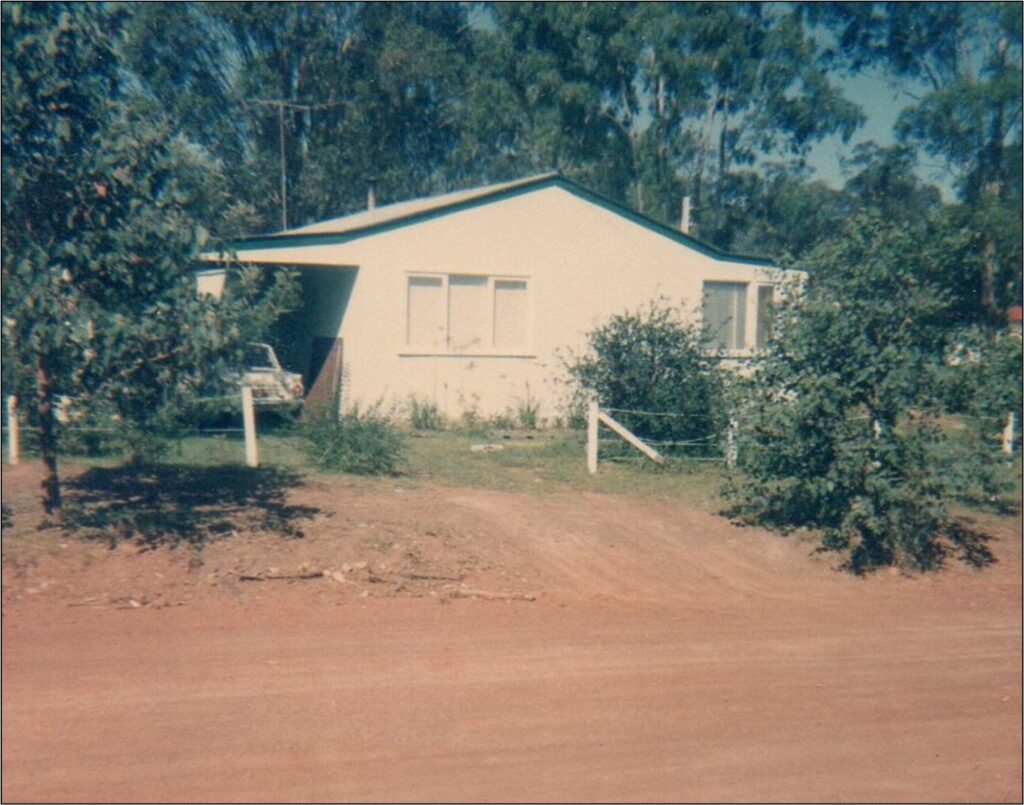by Shirley Seale
As I turn from Crown Street towards Garfield Road, along Edmund Street, the contrast with its appearance now and the way it looked when I first made that turn is quite mind-blowing.
We bought a little old house in Edmund Street and moved in October, 1961. We had a four- month old baby and were sure we could bring new life to the house with our youthful energy. Little did we know that the very next week my husband would have a severe accident which resulted in his wearing a back brace for 3 years – so we did renovate the house but it was finished nine years later.
Edmund Street had four houses on our side and two on the other, all on small acreage lots. The road itself was not tarred and was a luscious red clay surface which turned to squelching mud after rain. There were no streetlights. We had a telephone service which connected to the local exchange. Our number was Riverstone 462.You turned the handle on the black Bakelite phone set, (Bakelite was an early form of plastic), which rang at the telephone exchange where a lady would answer and ask you which number you wanted. She would work the switches and you were connected to the other line. The system was convenient too, because if something was happening in the area, the exchange could alert you. This was something that happened soon after we moved in when a big flood closed roads and inundated the lower areas of the town. It was a great day when an automatic exchange opened and we could ring the numbers we wanted directly. Before my property was sold in 2015, we had been fitted with the NBN boxes ready for a new set of communication updates.
We had a milk delivery each day and the milk bottles would be left in a box on our fence. In really frosty weather, the milk would have frozen, forcing the foil lid from the glass bottle and you would find a column of frozen milk with a little silver foil hat sitting in the box.
We had an outside toilet, a true ‘dunny’, some distance from the house, with a pan toilet. This was supposed to be emptied each week by the council and replaced with a clean empty can. However, we were considered by Blacktown council to be outside their urban area at Riverstone and left to our own devices. My outraged pleas meant that Mr Richards himself, who had the contract, would come in his car every week to do the job. To borrow a phrase from Prime Minister Morrison – how good was it when we could finally afford to install a septic system, which was still in use 54 years later when I left the street. No doubt everyone in Edmund Street is now connected to the sewerage system. I hope you appreciate your good fortune!
There was no garbage collection as we were outside the Council’s collection area, so combustibles were burnt in a Besser Block incinerator in the back yard, and hard rubbish like tins etc., was packed into bags and when several had been filled, taken to the council tip in Grange Avenue.
It was under the Whitlam Labor Government in 1974 when Prime Minister Gough Whitlam introduced the Regional Employment Development Scheme, known as the ‘RED Scheme’ to provide infrastructure and to put improvements into our towns, that we finally had the road tarred and street lighting connected. No more sliding around in the mud with no traction on wet days, or clouds of dust in the hot dry summer.
There was bushland around us and we had a written letter from the Council stating that our land would always be ‘green belt’. This was land set aside to create a green sward around outer parts of Sydney supposedly destined to remain undeveloped!
Not long after we moved in a possum scrambled down our chimney and left a mess of sooty paw prints through the house as we tried to evict him. We had owls in the trees and an occasional fox trotting down the driveway and once a black snake slithered between my daughter and me as we sat on a rug on the lawn. We had three sheep in the back part of the property to keep the grass down and later my daughter was able to have a horse there too, while my son could ride his little mini motorbike through the bush at the back.
Edmund Street, and in fact all of Riverstone, was on land gifted as a grant to Maurice O’Connell when he married Governor William Bligh’s daughter Mary in 1810. Riverstone is really a ‘wedding present town’. She would be as gobsmacked as I am if she came to visit her grant now.

Photo: Shirley Seale
